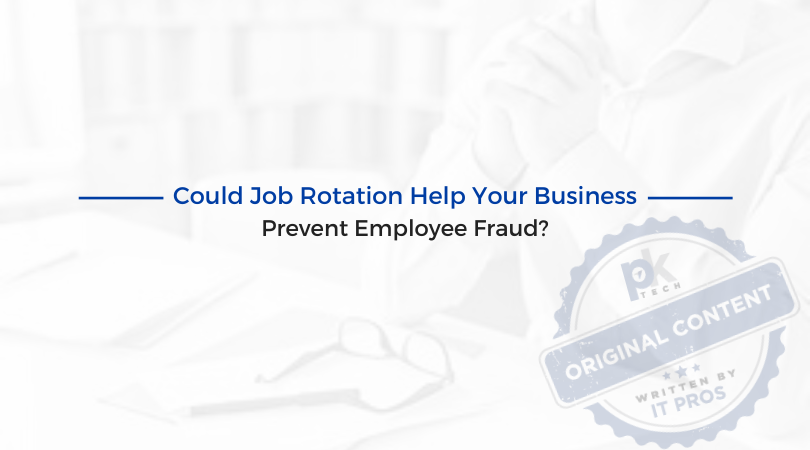Job rotation is an age-old business process that you may have never heard of or written off as old-school. As it turns out, job rotation can be a tool for fraud prevention. Let’s take a deep dive into why job rotation matters for small businesses, specifically from a fraud standpoint.
What is job rotation?
On its surface, job rotation involves moving employees from job to job. The goal is to diversify who does what and to make scheduled changes to employees’ duties.
How does job rotation help prevent fraud?
Job rotation plays a vital role in an organization’s fraud prevention strategy. How? We’re glad you asked.
Essentially, the job rotation process is founded on the security concept of separation of duties. It rides on the belief that maximum protection is achieved when each employee is on a need-to-know basis. That is, employees are privy to information they need to complete their job duties directly. This both protects the organization and diversifies risk.
The concept of separation of duties is also used to avoid fraud within organizations. The idea is that if one to two individuals are working together on nefarious tasks, they are unlikely to get caught. Once five or more join, one is likely to turn the others in. This business process tenant helps inform successful anti-fraud practices within organizations.
How can my organization initiate proper job rotation?
- Consider what needs to be “rotated” — for example, front-office and back-office teams. The front-office team may handle live payments (cash, credit card), and the back-office reconciles payments and calls customers to collect overdue payments. There are opportunities for fraud in each team. Rotating people will increase the chance of noticing irregularities. Also, a bonus benefit is that you’re cross-training your staff to cover each other, making you less susceptible to staff taking time off or turnover that may impact day-to-day operations.
- Make sure job roles are clearly defined. This allows information to be shared appropriately on a need to know basis with each individual role and keeps unnecessary sensitive information from being over-shared. Essentially, each role only knows the limited information needed to complete his or her job duties during any given rotation.
- Determine what data each role needs access to. Maintain an understanding of each role and associated levels of access and privilege. This means that you will need to change passwords and/or access rights during job rotations to make sure that each employee has only the needed levels of access.
- Consider making a visual chart representing teams, jobs, and access needs for your security team to refer to easily.
- Select a predefined timeframe for job rotation within your organization and stick to it – this provides predictability and prevents a loss of productivity.
If your organization is interested in exploring job rotation, you can read more about it here. We suggest speaking with your CPA regarding the best way to prevent employee fraud. PK Tech is happy to increase our client’s security postures by helping lock down access for specific job roles and other proactive security measures on request.
Get in touch with us if you have any questions.
